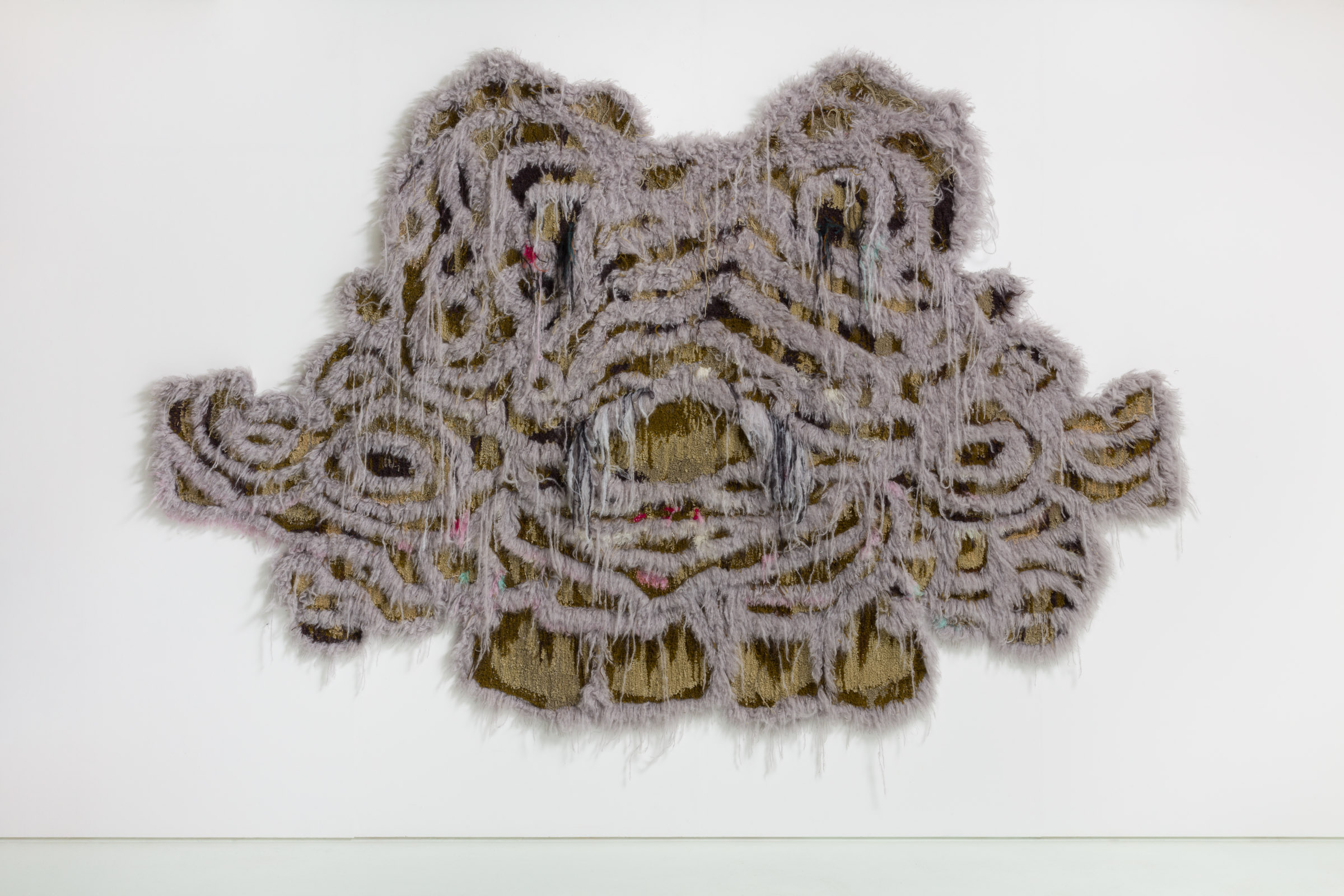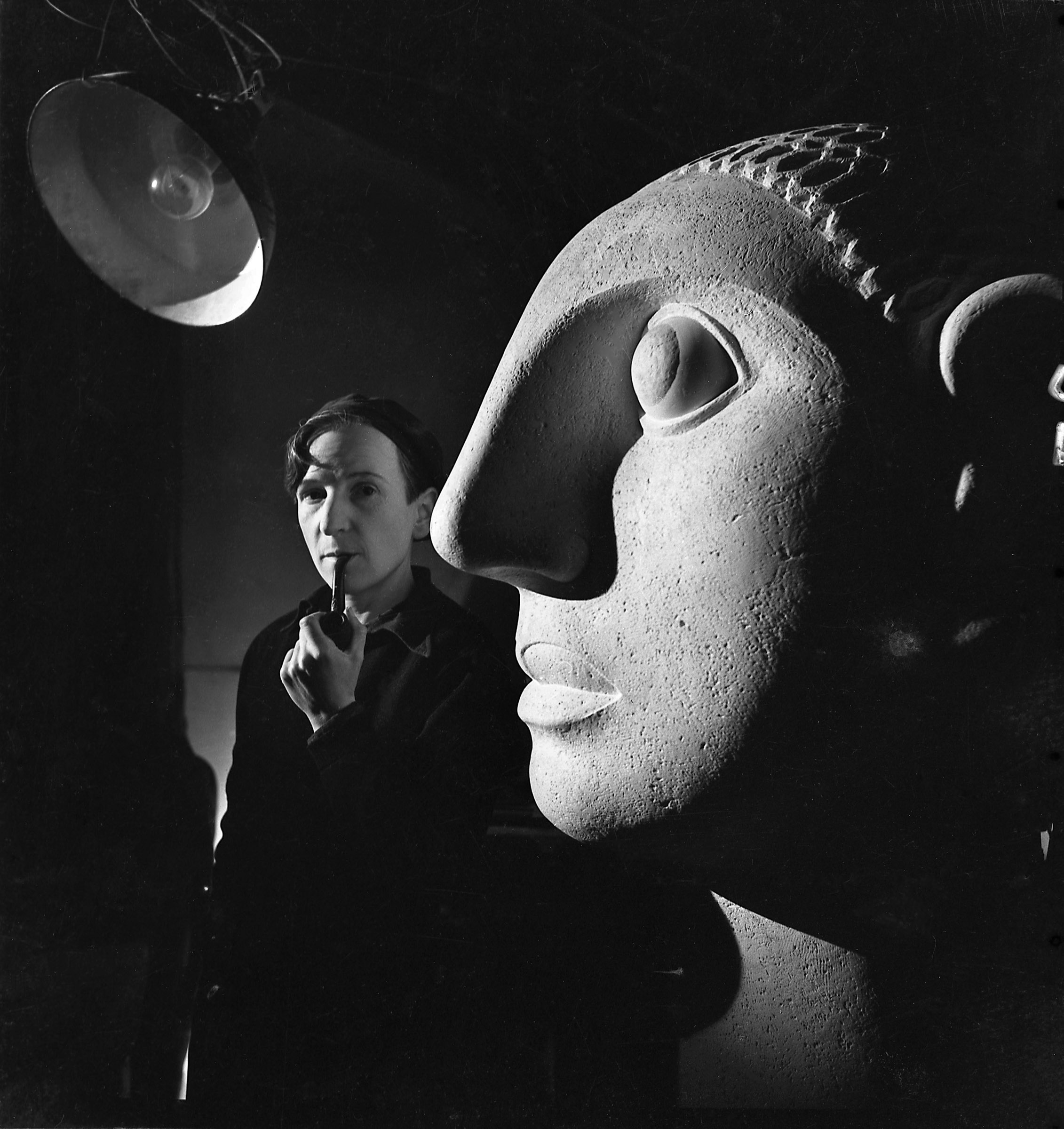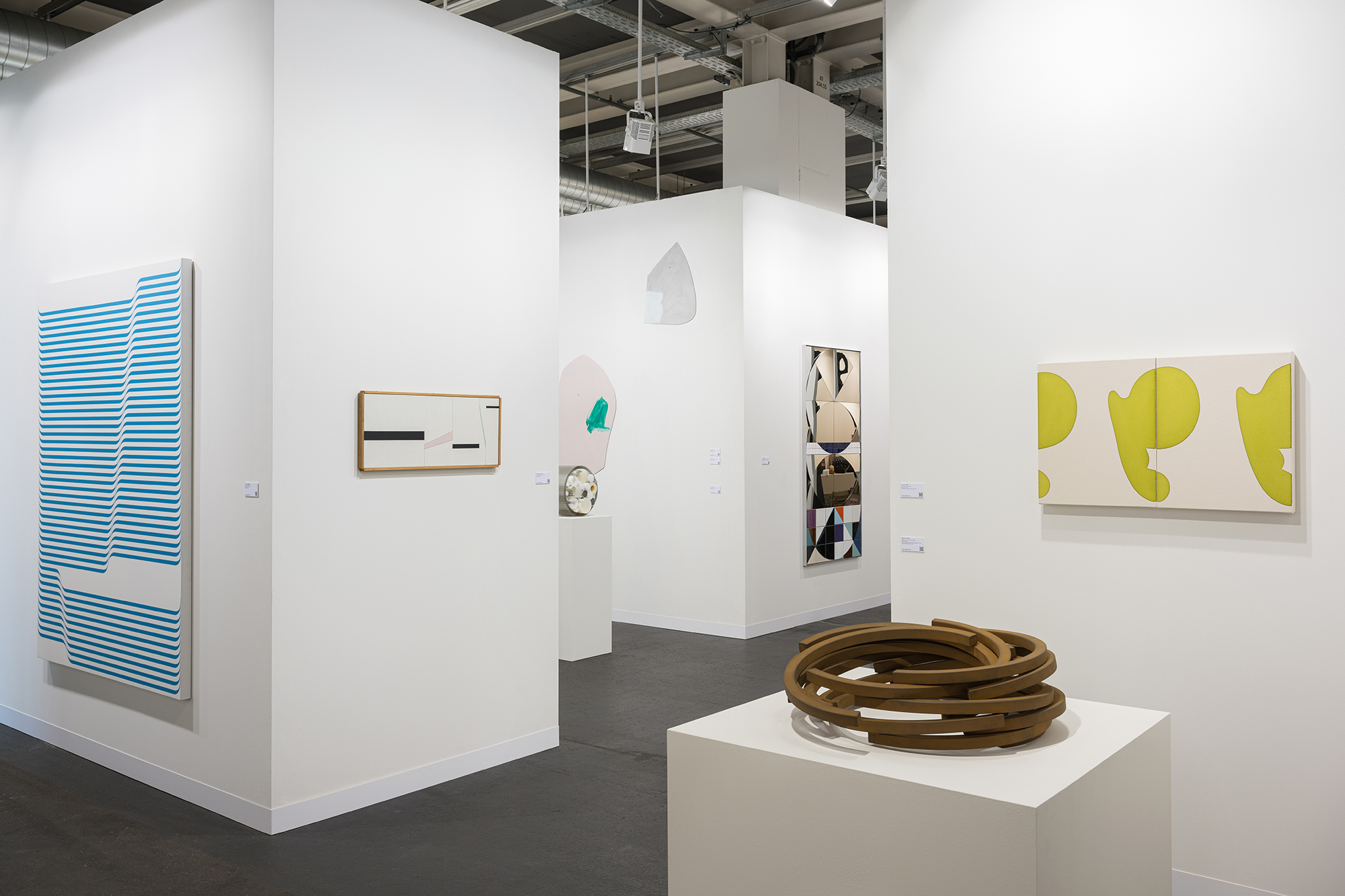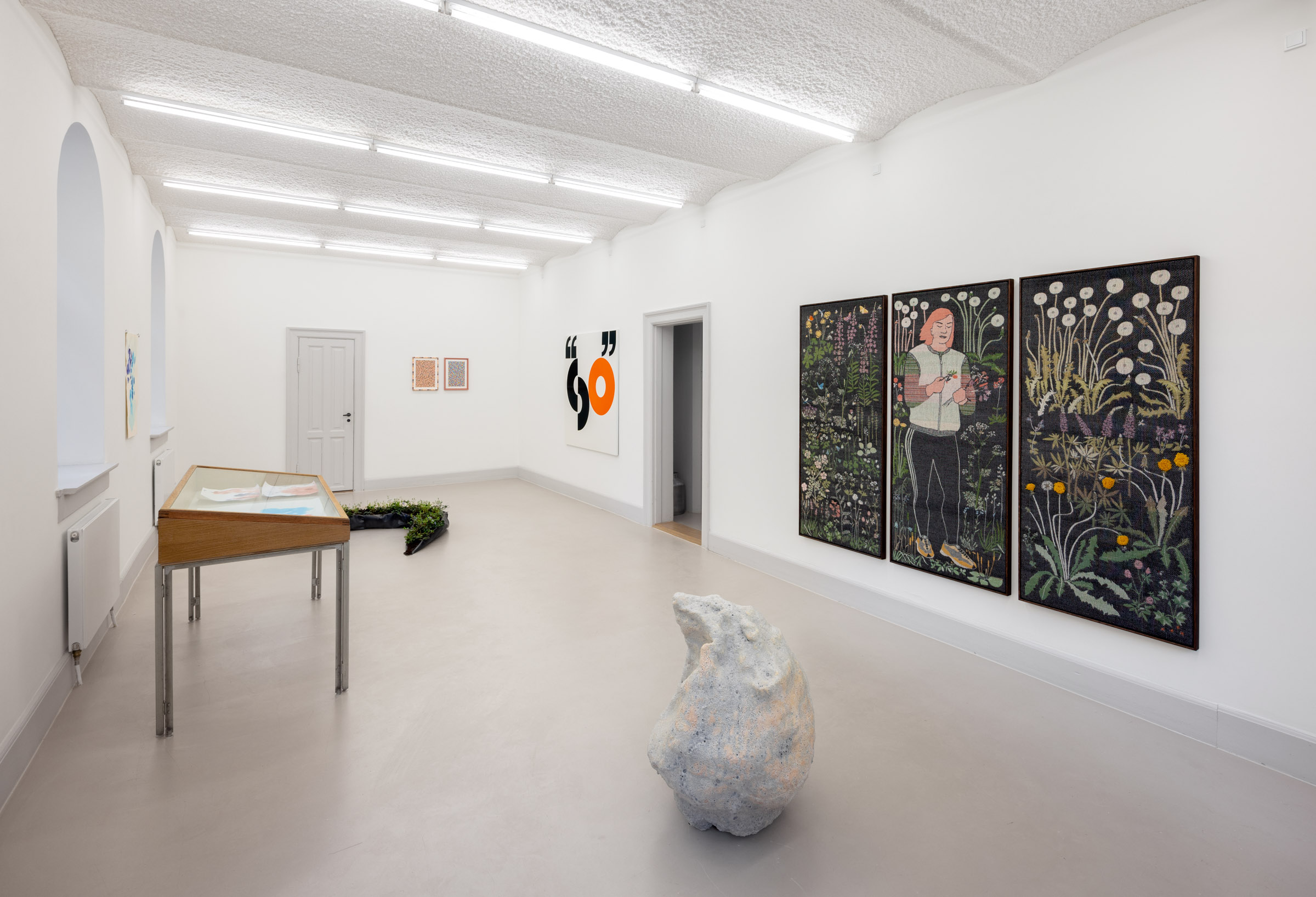“Through my work, I seek the fantastical and superimposed!”
Claudio Vogt: A journalist once called you an „artist-as-hunter“ because your works reminded her of hunting trophies, zebra skins, or bearskin rugs. And you use a gun (tufting machine) to make your work. Can you relate to that association?
Caroline Achaintre: Not really; my gun is a tame one. The likeness between long, hairy wool and fur evokes an animalistic side. However, unlike trophies that are dead on a wall, my work has a potential performative side: a live aspect.
That is why you refer to them as personas, monsters, or characters.
CA: Somehow, they all inherit something vigilant and awake, even if a piece looks like a coat or a cloak. But not all of my pieces are characters. I like the idea of co-existing worlds and animism – the belief that objects, places, and creatures all possess a distinct spiritual essence. Through my work, I seek the fantastical and superimposed – shifts from object to subject.
To those subjects, you are a mother, creator, and teacher. How do you shape their characters?
CA: To animate my materials, I am attracted to things that help to shapeshift, such as costumes and masks. European Carnival is most certainly an influence. The idea of taking on a different persona on the exterior and becoming this other, even if just temporarily, is thrilling. We thrive being more than one persona.
And so my work often sits between worlds and dimensions. Sometimes, I try to build a three-dimensionality into something flat. That is when I study architecture, how things are constructed and built, and there is also gravity. I like to use the drooping of wool and clay, as gravity is another proof of existence.
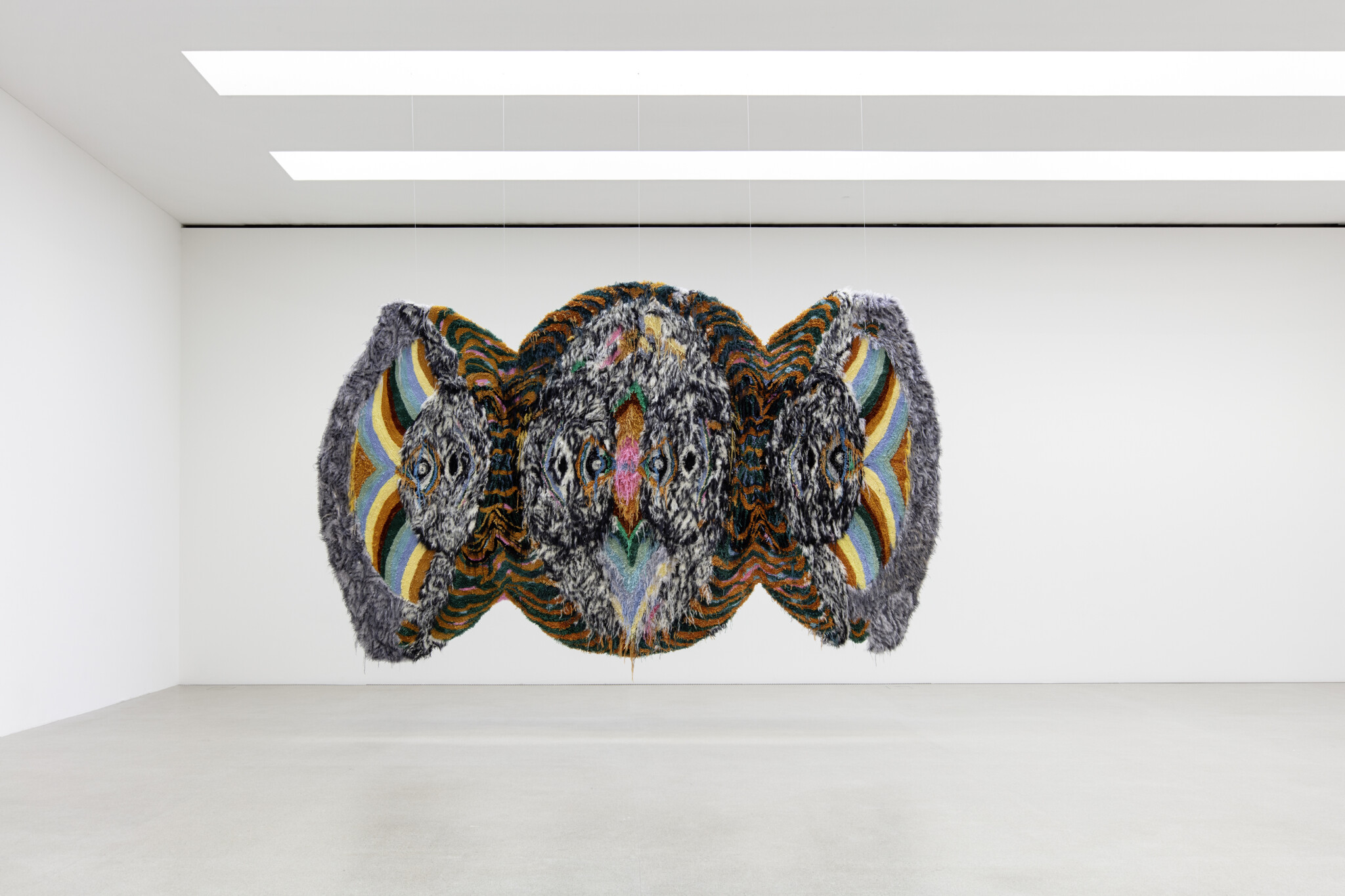
Photo: Stefan Rohner
Can you take us through the stages of creating your work?
CA: I have tons of images and sketches inspired by the things I see in real life and online: futurist architecture; anthropomorphic objects, especially handbags; science fiction ideas in B-movies; pre-historic art; objects in museums and the way they are set and displayed in our post-modern museum architecture – a mad hybrid. I process anything that triggers my imagination.
When something speaks to me, I develop a rough idea on paper, allowing further development on my tufting frame when I make the actual wool piece. These steps are a combination of planning and improvisation.

Duck Face, 2020; Hot-Hair, 2004; Ouffff!, 2018; Dorothea, 2020; Iron-ique, 2018; Matte, 2004.
You have created some of your most impressive works with wool. How did you come to work with this material?
CA: While studying at Goldsmiths College Fine Art in the early 2000s, I made intense ink drawings, examining the idea of the uncanny: something unsettling within a familiar environment. I was seeking domestic materials, such as wool, and translating those drawings into objects got me thinking about carpets. The technician in the textile department at Goldsmith College – today called Goldsmiths, University of London – introduced me to tufting.
Right away, I loved the process as much as the outcome. It is a physical and relatively fast process compared to other textile techniques. A yarn is punched from the back into a primary base material to create a pattern. For that, I use a tufting gun. Not instantly seeing the result on the other side while tufting is another gratifying aspect of the procedure.
And wool itself, as a material, is a funny one. Sometimes I like it, sometimes it is almost too much. It has an eerie quality, is non-neutral, is warm, and relates to life. It is ambiguous. That’s why it works so well for me.
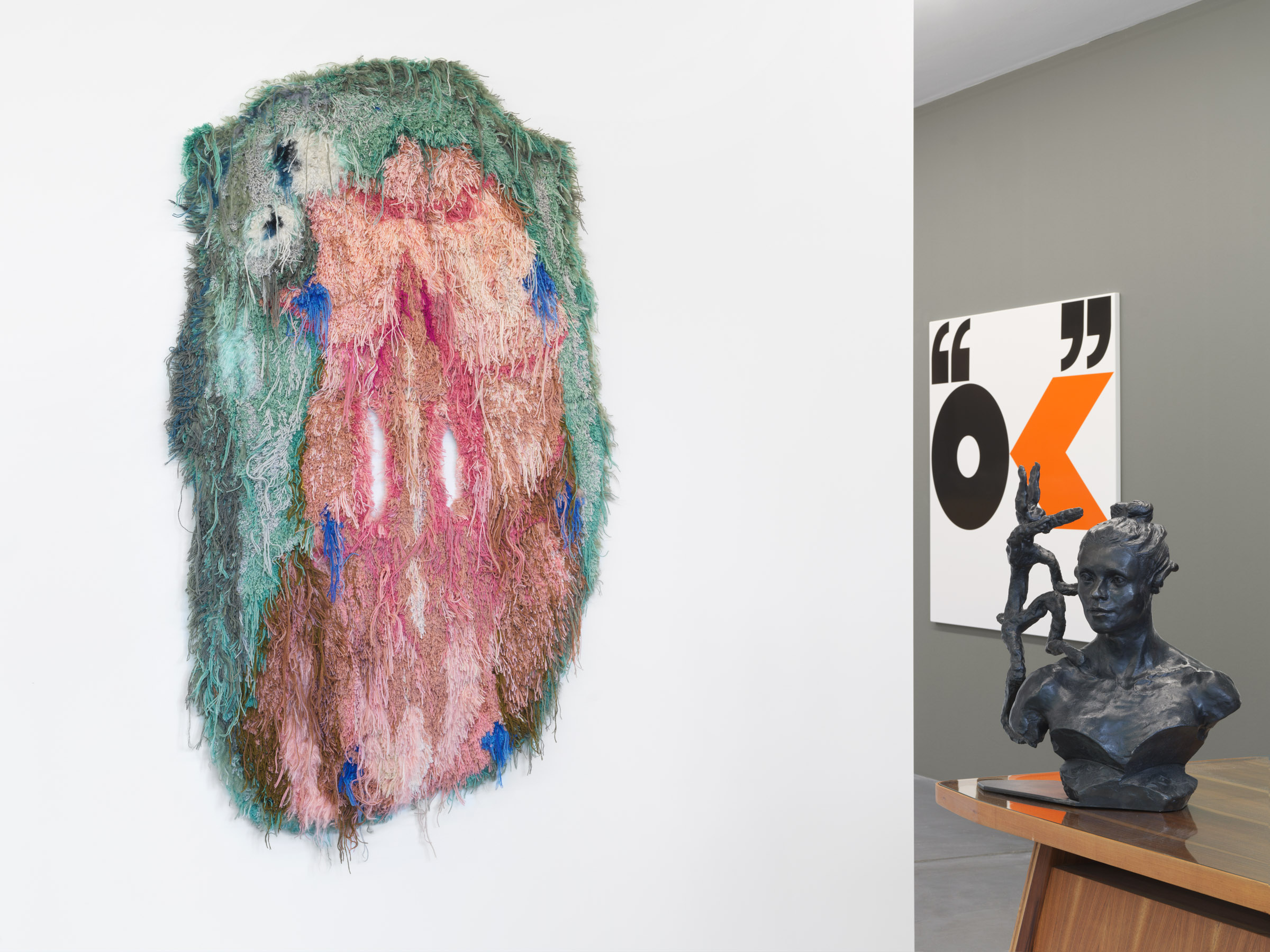
I can’t unsee a feministic side in your drawings, ceramics, and wall pieces. It is a bold one, a celebrating facet. Traditionally, the making of carpets used to be a handicraft, predominately performed by women. Are there specific traditions, artists, or movements you feel connected to?
CA: I never felt being part of a tradition to begin with. Traditions never informed my choice in using those materials, just their attributes. I used to rebel against the idea of male and female materials, having previously worked with metal; now, it is primarily wool and clay. But, of course, I have an extended interest in Textile art. And it is true, I think through my hands. Ideas and processes are very much interlocked, and I can only relate to my pieces by making them. That classifies as handiwork.

PussyLoco, 2017
Ceramic
44 x 31 x 11 cm

Ribskin, 2017
Ceramic
40 sx 38 x 5 cm
Then let’s speak about your ceramics, another process-intensive work. What is their role or reason for existence in relation to the larger, softer, colored tufted works?
CA: I felt the urge to make sculptures apart from the woolen objects that resemble paintings as they often gaze from the wall. I also had the desire to give company to the tufted pieces in their habitat, creating a dialogue with works that have a different dynamic.
Are those ceramics also based on sketches?
CA: Yes, as well, but a bit less so. An idea or image develops in my head, then it is more like notes, describing what it should be like. Sometimes, I take pictures of objects with attributes that I like my ceramics to have.
In 2025, we’ll have a large presentation of your works here at von Bartha in Basel; what else is on our mind and horizon right now?
CA: Next month, I will open an exhibition at Galerie Art Concept in Paris. A few other shows are coming up this and next year, but I am always busy in the studio. Apart from that, I teach as a Professor of Textile Arts at the Burg Giebichenstein Kunsthochschule Halle. Like my work, I shift between different realities.
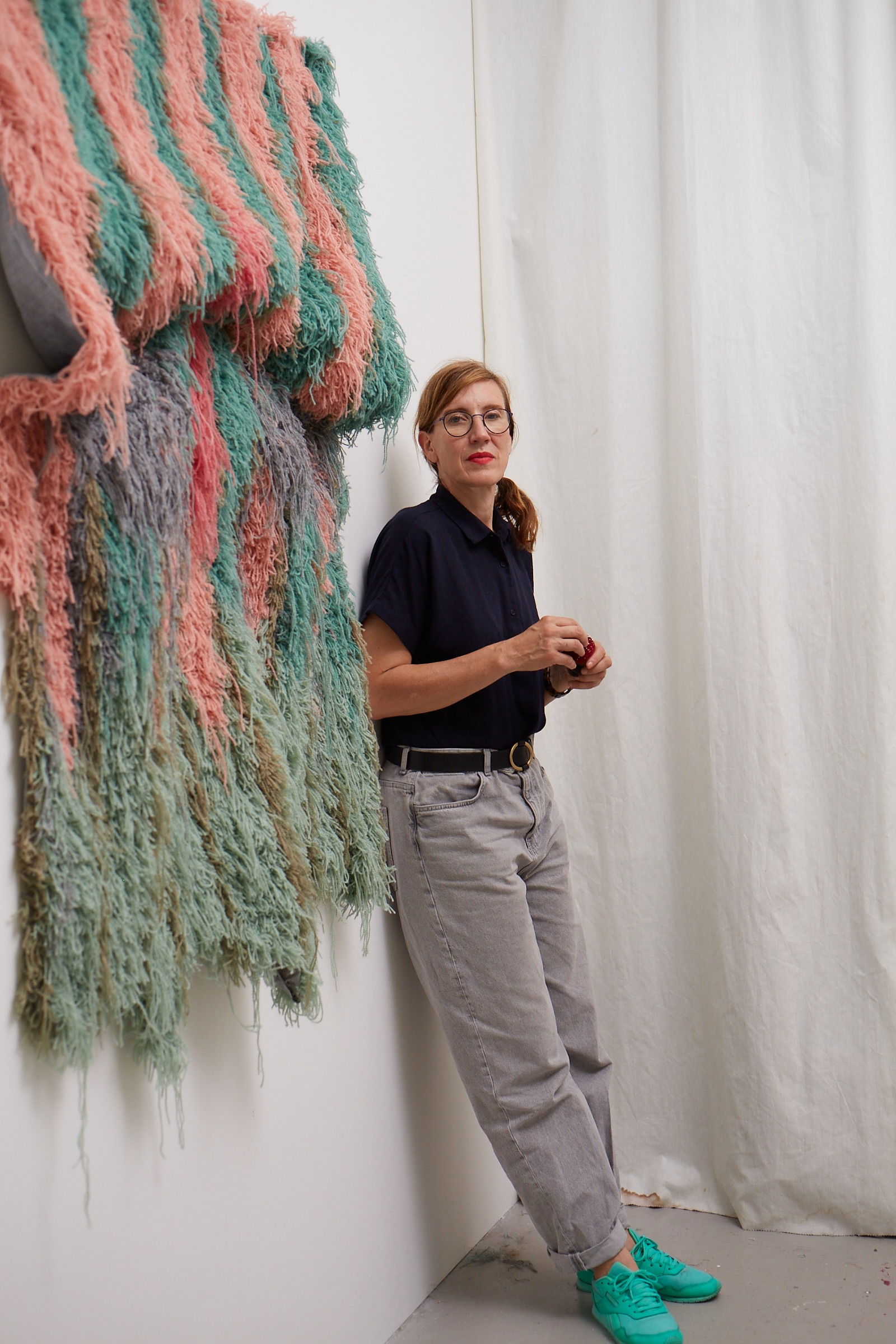
Photo: Annabel Elston
- Header Image: Caroline Achaintre, M.A.Z.E, 2023, 230 x 380 x 5cm. Photo: Angus Mill
